The Human Digestive Tract Has All the Marks of a Flexible Carnivore
The size of the human stomach and small intestine, the high acidicity of the stomach, and the few bacteria in the small intestine are all the characteristics of a digestive tract designed for meat.
In this post:
Specific characteristics of the digestive system of a species show what kind of diet is ideal for that species.
Animals that thrive on plant-based diets have gigantic low-acid stomachs, several compartments to their stomachs (cows have 4), large cecums, and extremely large colons for bacteria to ferment the enormous amounts of plant roughage consumed.
Human digestive systems have none of these characteristics. Our digestive systems are identical to that of a flexible carnivore such as a dog: an animal that is designed to eat mostly meat but can tolerate some other foods. This digestive tract has a small, highly acidic stomach for breaking down muscle protein and fat, a long small intestine for absorbing fatty acids and protein, a tiny cecum, and a small colon.
Those who claim that humans should be vegan or even mostly plant-based can not produce the example of one single animal with our type of digestive system that eats mostly plants.
One thing that sometimes causes confusion in these conversations is that the human body is incredibly adaptable; the body attempts to make the most of whatever fuel it’s given. People can eke out an existence on a vegan or plant-based diet for some time. Some people develop health problems immediately and others limp along for quite a while and appear fine. But bare survival doesn’t make a diet ideal for the long term.
This info doesn’t imply that everyone should be a strict carnivore and never eat plants but that our digestive system was designed to get most of our nutrition from animal foods. Plants and grains should be considered add-ons.
Here’s a question I’ve puzzled over greatly since throwing myself into nutrition research: why is it that there is virtually no controversy about what constitutes the ideal diet for any animal on the planet, yet you can’t spend 5 minutes reading about human nutrition without running smack into contradictory information.
There doesn’t seem to be much confusion between what the lions are fed in one zoo compared to another. It’s not as if one zoo gives their lions a meat-based diet and other zoos are feeding the lions kale smoothies to save the planet. Instead, zoologists have a pretty good grasp of what each species should eat without all the controversy that plagues modern nutrition research for humans.
As I’ve mentioned before, when I was a kid, I had more pets in my bedroom than inhabit most pet stores. I meticulously researched the care and feeding of each pet. Reading one book was never sufficient. I read several books about the care and feeding of each of my precious animals, and I carefully noted any apparent contradictions. Surprisingly, there were few.
There was a clear consensus on the ideal diet for rabbits, frogs, salamanders, newts, hamsters, turtles, and various kinds of fish. (I once embarked on a crusade to let everyone know that feeding dried ant eggs to turtles was a fad that some pet stores were advocating but that dried ant eggs were not at all an adequate source of nutrition for turtles—too bad they didn’t have Substack back then. 🤣)
One could argue that zoologists get this info from observing animals in the wild. You can’t do that with a human—or can you? Isn’t that what Weston Price did? He sought out the most isolated people groups in the world to observe both their diet and their health. He found almost no diabetes, cancer, heart disease, autoimmune disease, allergies, or cavities. They also had a remarkable resistance to colds, flus, and tuberculosis when exposed. (For more on Price’s discoveries, see here).
Yet, despite Price’s groundbreaking and meticulous research into the importance of animal foods for human health, debates continue to rage over what a human should eat. And it’s not a debate limited to women’s magazines in the checkout aisle; it extends right up to the highest levels of academia. For example, the Harvard School of Public Health is one of the loudest voices exclaiming that an ideal human diet is either mostly plant-based or better yet, completely vegan.
A recent 4-part Netflix documentary is further pushing a vegan diet based on a randomized controlled twin study wherein identical twins were placed on either a vegan or an omnivore diet for 8 weeks. Because the fasting insulin, LDL cholesterol, and weight decreased more in the twins on the vegan diet, the study claims that the vegan diet is therefore the healthiest diet. That is equivalent to taking a lion at the zoo that never exercises because he’s in a small cage and is fed carbs despite that not being a lion’s natural food and is therefore overweight, and then feeding him nothing but lettuce for 8 weeks and then saying, “Look, the lion lost weight, his insulin went down, and his LDL cholesterol is lower. Therefore, lettuce must be a lion’s ideal diet—just like a bunny rabbit.”
Any creature will lose weight eating only plants for 8 weeks, even a carnivore. You can also lose weight, have your insulin fall, and have your LDL go down by drinking only water and eating no food for 8 weeks. Does that make water alone a human’s ideal diet?
I appreciate Peter Attia’s careful analysis of the twin study: A study comparing the effects of vegan and omnivorous diets fails Science 101: A direct-to-docuseries twin study should not be mistaken for valid, knowledge-generating research. Thank you for saying that, Dr. Attia. There’s a glut of studies that fail Science 101.
So we have one camp of people claiming that humans need animal foods to obtain ideal health (Weston Price and many others) and a loud, media-supported cohort clambering to produce studies claiming plants are the only way to go. Is there any objective scientific way to sort between these warring camps?
I’m so glad you asked. Because as it turns out, there is quite a bit of objective, scientific evidence to guide us about exactly how a human should eat!
The Design of the Digestive System Shows an Animal’s Ideal Diet
Let’s suppose that a naturalist was wandering through Tazmania and stumbled across a new species never observed before. If the naturalist wanted to know what this new species ate, but the animal was found newly deceased so he couldn’t observe him eating, he could dissect the animal and examine its gut.
Here are the chief clues that would tell the naturalist what kind of diet such an animal was designed to eat: the shape of its teeth and jaw, the acidity of its stomach, the length of its small and large intestine, the size of its cecum, and bacteria present in stomach and colon. Let’s take these one at a time.
The Shape of the Teeth and Jaw:
By examining the teeth and jaw of this newly discovered animal, our zoologist could determine what food this animal primarily relied on. Animals meant to depend primarily on meat for nutrition have jaws designed to make vertical movements for tearing into tough meat whereas herbivores have jaws that rotate for grinding through plant material. Carnivores have incisors and ridged molars for chewing meat whereas ruminants have flat molars and lack canines (the sharp teeth named after dogs).
It turns out that humans, like other carnivores such as dogs, have the jaws and teeth of carnivores. These facts are not meant to imply that humans and dogs should never eat plants but simply that the design of the human teeth and jaw is primarily for biting and chewing meat.
Acidity of the Stomach:
Animals designed to eat large amounts of meat and fat have highly acidic stomachs. This includes obligate carnivores such as lions and flexible carnivores such as dogs (who eat mostly meat but can tolerate some plant foods).
On the other end of the spectrum are ruminants who have digestive tracts designed exclusively for plant matter. These are animals such as cows, sheep, and rabbits. They have the weakest stomach acidity of any mammal to keep bacteria alive in the stomach. No animal’s digestive tract can break down cellulose—rough plant material—so trillions of bacteria occupying the gut of ruminants and other herbivores are responsible for converting this tough plant fiber into saturated fat. As the bacteria feed on the cellulose and die as part of their life cycle, the dead bodies of the bacteria become a source of protein as well for the ruminant. So there you go. That is how grass becomes burgers.
This bacterial action begins in the stomach which is why it’s important that an animal such as a sheep has very weak stomach acid. The strong acid in a carnivore’s stomach kills all bacteria while breaking down the meat and fat into amino acids and fatty acids. Because a carnivore doesn’t rely on fermenting plant matter to get most of its nutrients, it’s not a problem that no bacteria can survive in its stomach.
Humans have extremely acidic stomachs, the most acidic of any animal.
Length of the Small Intestine
Some vegans argue that humans should eat a plant-based diet based on the fact that gorillas, chimps, and other monkeys eat primarily plants, and they believe we descended from monkeys. I don’t believe we descended from monkeys. Instead, I believe that since creation, each creature has reproduced “according to its own kind.” However, that’s beside the point for the moment. My main point right now is that the human digestive system looks nothing like a monkey’s.
The small intestine is the place where fats and proteins from meat, dairy, and eggs are absorbed, and the colon is the place where plant matter is fermented. As the chart below shows, humans have much longer small intestines and much smaller colons relative to our size than monkeys.
Size of the Colon and Cecum
Here’s something that confused me when I was a kid: why is the "small” intestine much longer than the “large” intestine? It turns out that the size tags are referring to the diameter of the tubes and not their lengths. Second thing that confused me: what’s the difference between the colon and the large intestine? Answer: they’re often used interchangeably in common language although some science textbooks refer to the colon as the main portion of the large intestine between the cecum and the rectum (and that’s probably more than you wanted to know. You’re welcome). I’m going to use the word colon here instead of large intestine to keep everything simpler.
The length of the colon and the cecum (sometimes spelled caecum) are further clues as to what a particular species is designed to eat. Plant-based species universally have extremely giant colons and large cecums. The cecum, a pouch connecting the small intestine to the colon, breaks down any fiber that was not broken down in the small intestine. In a cow, the cecum holds about 2 gallons of plant material whereas in a human, the cecum is tiny.
In an animal designed to eat a mostly carnivorous diet, very little digestive activity takes place in the colon. It is simply a place where water and salts are absorbed before waste matter exits the body. But in a ruminant, the colon is giant because this is where most of the fermentation of cellulose takes place.
As the bacteria ferment the tough plant material, they also create various vitamins including B12 and K2. This is the reason why many animals do things that we consider quite disgusting. A cow chews its cud, which is to say, he coughs up the partially digested plant matter and rechews it. This allows the cow to reabsorb the vitamins that were created in the fermentation process. The absorption of nutrients happens in the small intestine but the fermentation happens further down in the colon. So unless things move backwards, the nutrients won’t get absorbed.
One way rabbits and other herbivores such as certain species of monkeys solve this problem is they have a special poop that they re-eat. Fully digested poop goes onto the ground, but another special, partially digested poops get re-eaten so the animal can absorb the nutrients in the small intestine that were created further down in the colon.
Carnivores have no need for this action since meat, eggs, and dairy contain all the necessary nutrients for life.
This is why vegans are all deficient in B12. You cannot get B12 from plant foods, and this happens to be one of the most important vitamins in that it’s intimately involved in a process called methylation.
Here’s a helpful summary comparing a human’s digestive system to a dog and sheep. Notice how similar the human and the dog are to each other.
Bacterial Activity in the Gut
Ruminants and other herbivores have digestive systems crawling with bacterial activity at every point.
Humans, however, are meant to have relatively little bacterial activity in the small intestine. If this grows out of control, we can develop a pathology called SIBO or small intestinal bacterial overgrowth. When this happens, gram negative bacteria die and release something called endotoxin or lipopolysaccharide (LPS)—two terms for the same thing. Endotoxin can get into the bloodstream and can cause autoimmune symptoms, headaches, fatigue, joint pain, and even mimic Parkinson’s symptoms.
It’s somewhat controversial as to what causes and cures SIBO. Many non-traditional doctors believe that the widespread use of PPIs (proton pump inhibitors) such as Prilosec, Prevacid, and Nexium inhibit stomach acid allowing bacteria to pass into the small intestine. Others warn against drinking alkaline water because of how important stomach acidity is.
(Note: my husband has successfully weaned himself off of Prilosec which he had been on continuously for 15 years. This was a slow and tedious tapering process as the body becomes very dependent. There were weeks when he stayed at every other day before he could drop down to every third day.
Now that he’s off the PPI, he still uses Zantac, a less disruptive antacid, a few times a week although I’ve noticed he’s slowly using it less and less. This was not an easy project that he set himself to do. It’s much easier to pop a pill. He’s had to eat less at each meal, even though he’s always been a light eater, and avoid all food 3 hours before bed, something we aim to do anyway. When he was first going off, he had to limit coffee to once a week. He can now drink it daily again.)
Futhermore, food that is not fully digested because of low stomach acid will also ferment the small intestine. And lastly, eating too many raw vegetables may accumulate in the small intestine and cause bacterial overgrowth. See, I told you this was controversial. I know everything you’ve read in like, forever, has been telling you to feed your gut microbiome. I’m just letting you know there’s another perspective. (This is another example of how there’s so much contradictory info but I wouldn’t have stuck my oar in if I hadn’t researched this a bit.)
One of the most effective ways to cure SIBO is going on a meat-only diet to starve those bad buggers. Some can conquer SIBO by simply cutting all sugars and simple carbs. This study showed that the overgrowth of klebsiella was linked to several autoimmune diseases such as Crohn’s and recommends a zero-carb diet for a time as a cure. For a thorough discussion of SIBO, see this article by Dr. Jockers.
Are you considering being a vegan and going on a plant-based diet? Compare the size of your stomach to that of a cow:
A cow's rumen has a capacity of up to 95 liters and contains billions of bacteria and other microbes. These microbes produce the enzymes that digest cellulose into sugars and fatty acids for their hosts to use.
Here are some health problems that people can develop on a vegan diet:
Collagen deficiency: glycine is an amino acid found primarily from eating animal skin, tougher cuts of meat such as chuck beef and dark meat chicken, drinking bone broth, and eating the small bones of fish such as sardines. Glycine can be found in trace amounts in beans but not enough to facilitate optimal upkeep of skin, bones, and hair. The skin of vegans will age more quickly without adequate glycine. For more about the advantages of glycine, see here.
Protein deficiency: although plant foods contain some amino acids, it’s difficult to get enough protein from plants alone. Although there is such a thing as a vegan bodybuilder, this can only be accomplished through massive supplementation of plant protein powders that are specially formatted with amino acid profiles that mimic meat. It’s not possible to get the ideal amount of protein using whole plant foods.
Anxiety: several compounds in animal foods support the brain’s ability to make GABA, a calming neurotransmitter that combats anxiety. These include taurine, glycine, and choline, the precursor for acetylcholine. Certain people are more susceptible to brain disorders on a vegetarian or vegan diet than others. Eminent researcher Dr. Chris Masterjohn developed such bad anxiety while on a vegan diet that he couldn’t leave his house. This anxiety went away after eating red meat again and has never returned. (Story here).
Weakened immune system: Animal foods both contain cholesterol and support the body’s ability to make its own necessary cholesterol. This cholesterol is vital to the immune system as antibodies are constructed using LDL cholesterol (yes, this is the supposed “bad” cholesterol—it was given that tag to sell statins). This is the likely reason why this study from the British Medical Journal which surveyed 68,094 older adults found that those with the highest LDL lived the longest. The conclusion reads: “CV [cardiovascular] mortality was highest in the lowest LDL-C quartile.” In other words, those with the lowest LDL had the highest risk of dying. The food industry was right about one thing: vegetable oils to reduce your cholesterol. They were wrong about that being a good thing.
Conclusion
Humans simply do not have the right apparatus for obtaining the materials we need to thrive from plants alone.
When ruminants such as cows are fed thick grass grown in nutrient-dense soils, their expert digestive systems produce everything we need to thrive: milk, cheese, butter, and meat. When chickens can forage, their eggs supply the ideal food packed with essential vitamins, minerals, fatty acids, and protein. These are the ideal foods for our digestion.
Many people react poorly to dairy, and this is likely from what the conventional dairy cows are fed—often corn and soy silage instead of grazing on nutrient dense grass in the spring, summer, and fall and fresh hay in the winter. But if you can find a local raw source of dairy, you may find yourself able to tolerate it again.
For more info on getting all the necessary vitamins and minerals, check out this post:




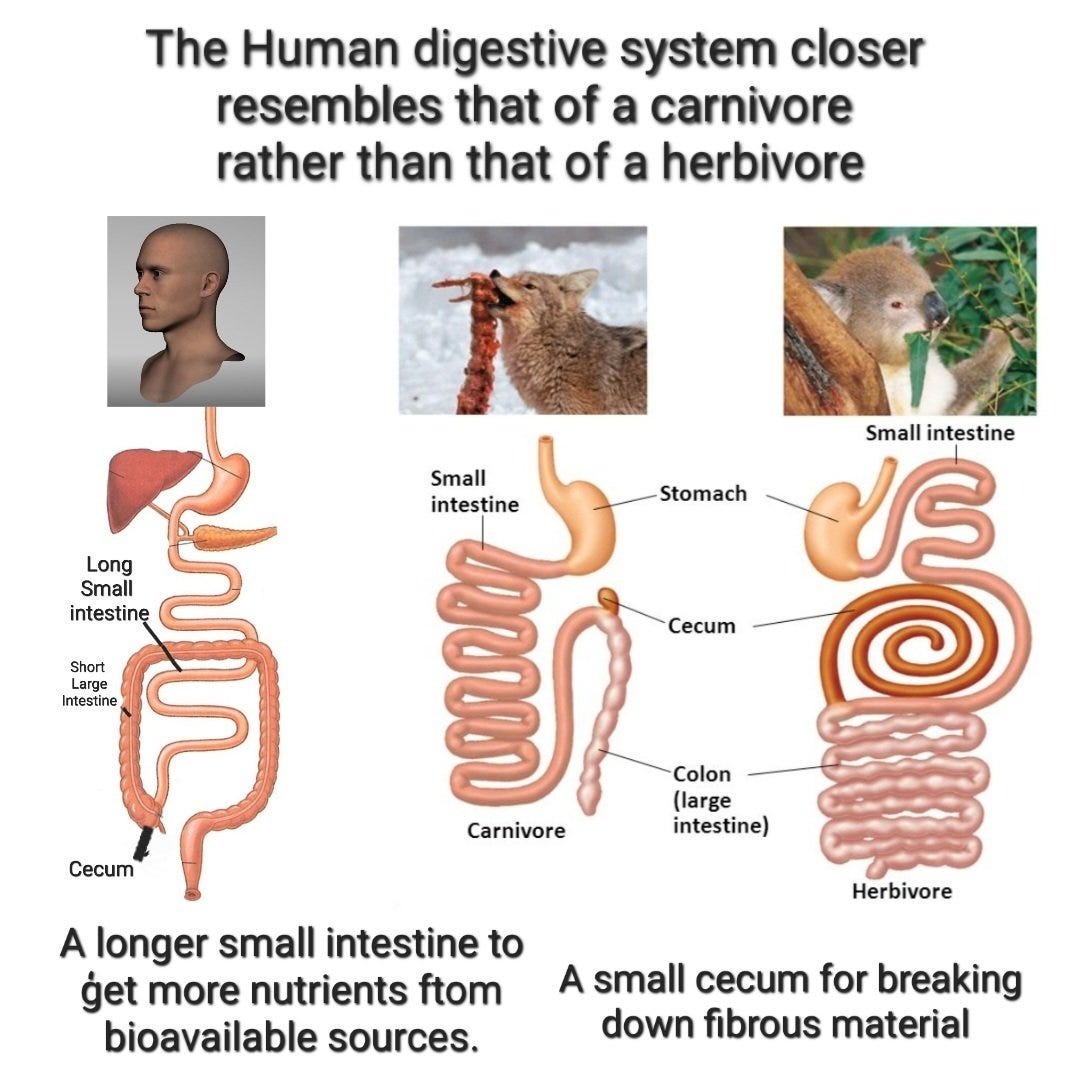
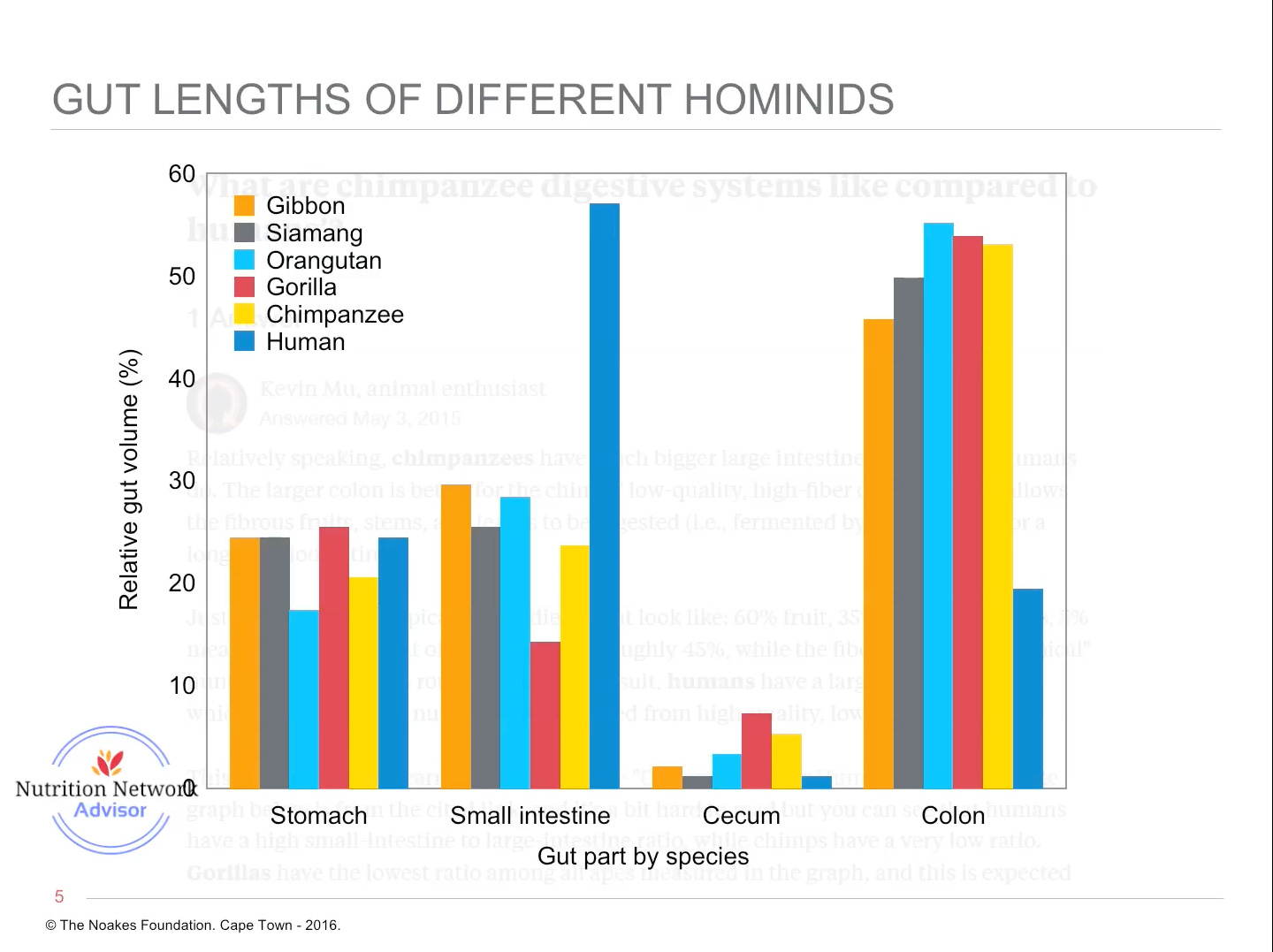
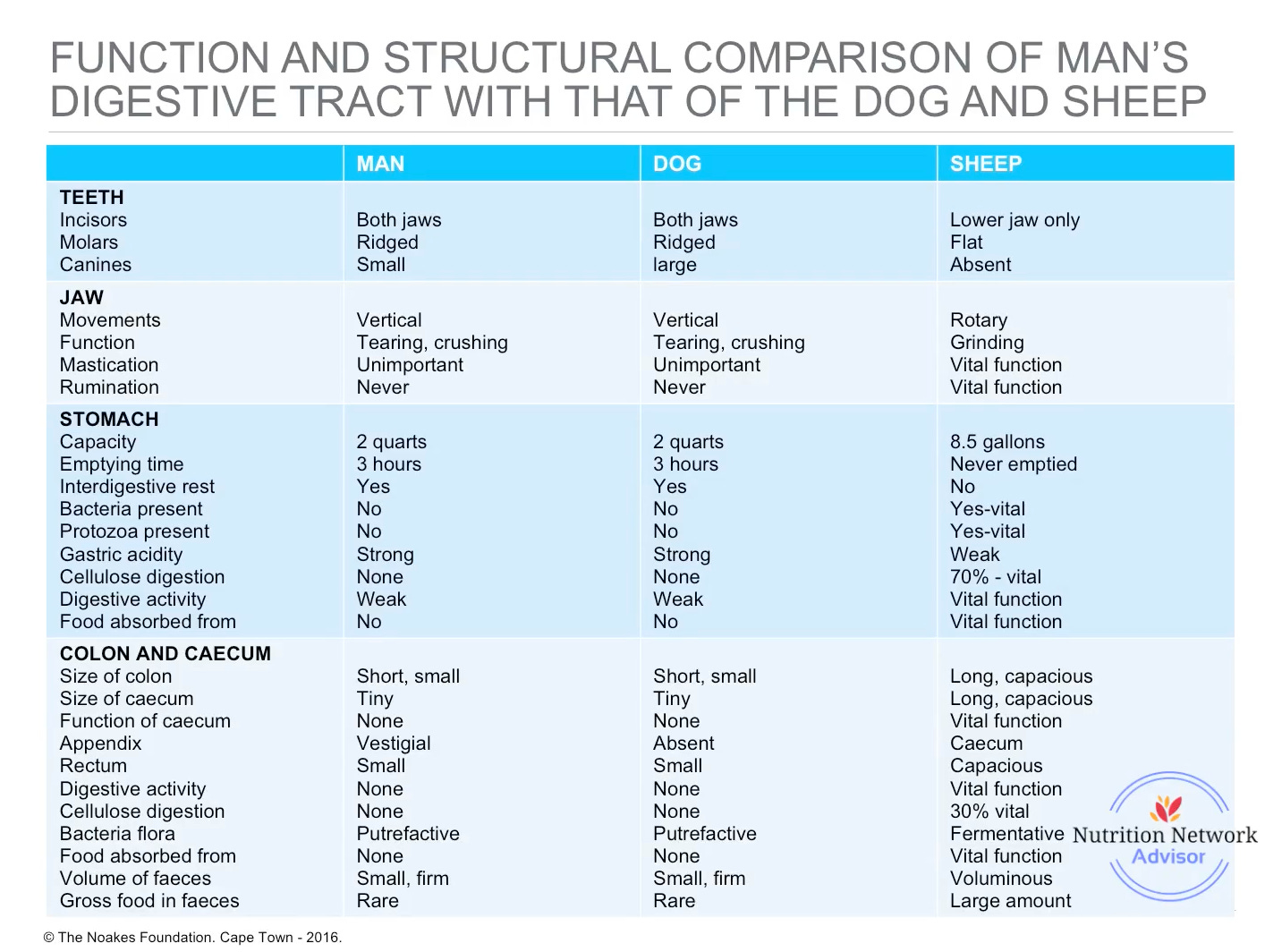
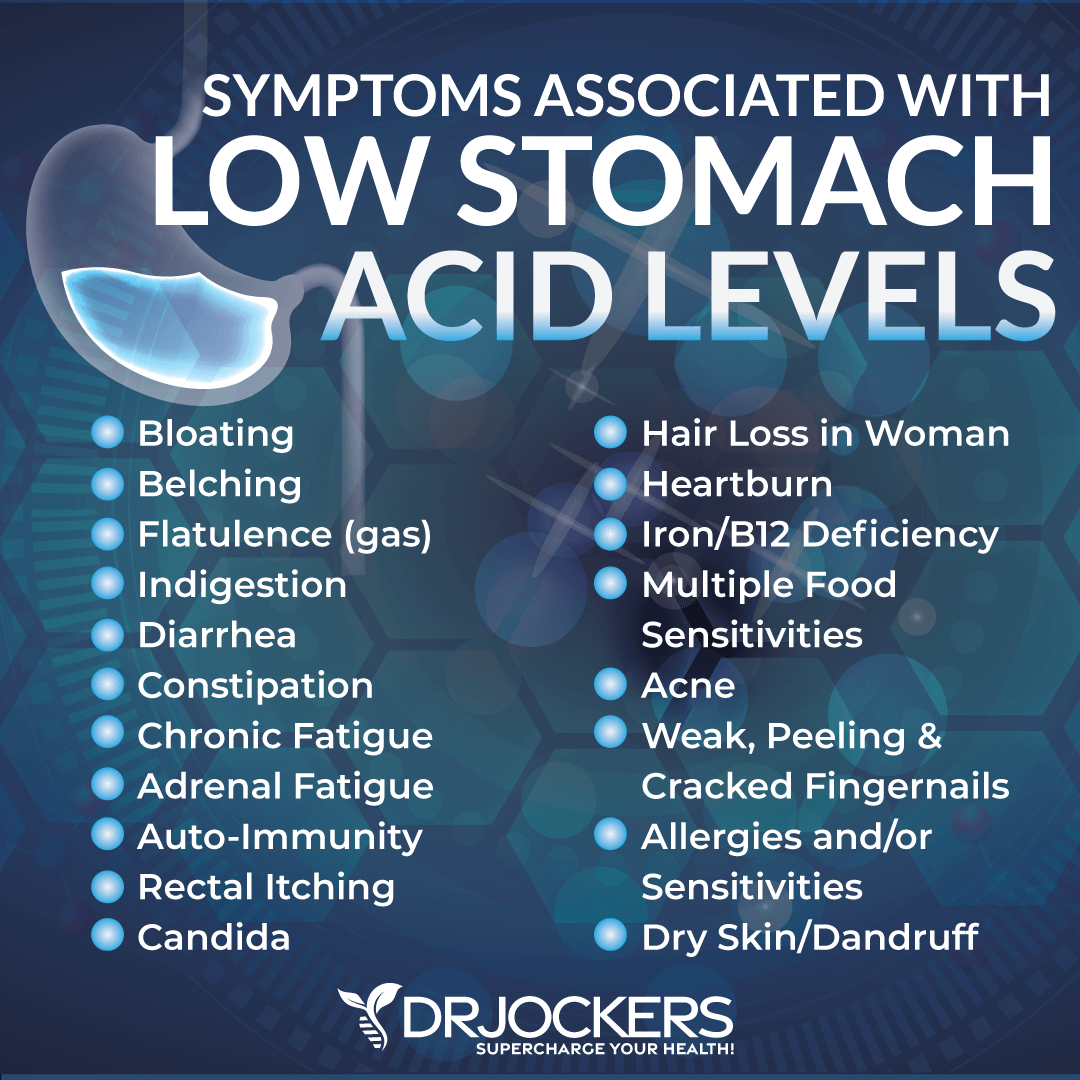
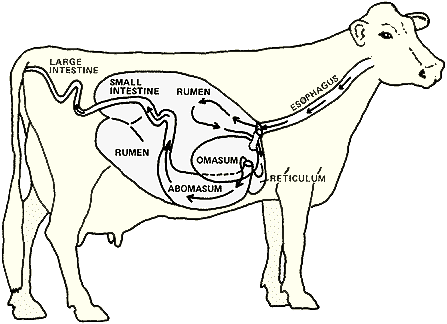
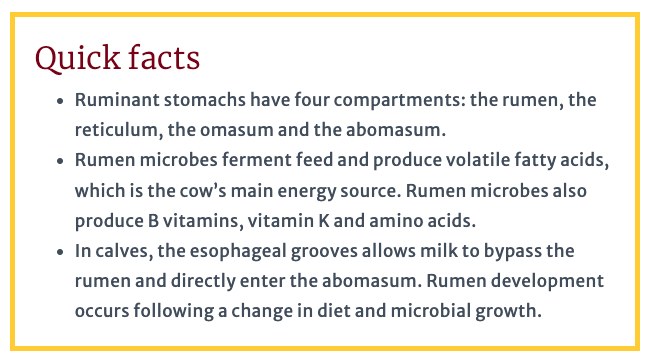
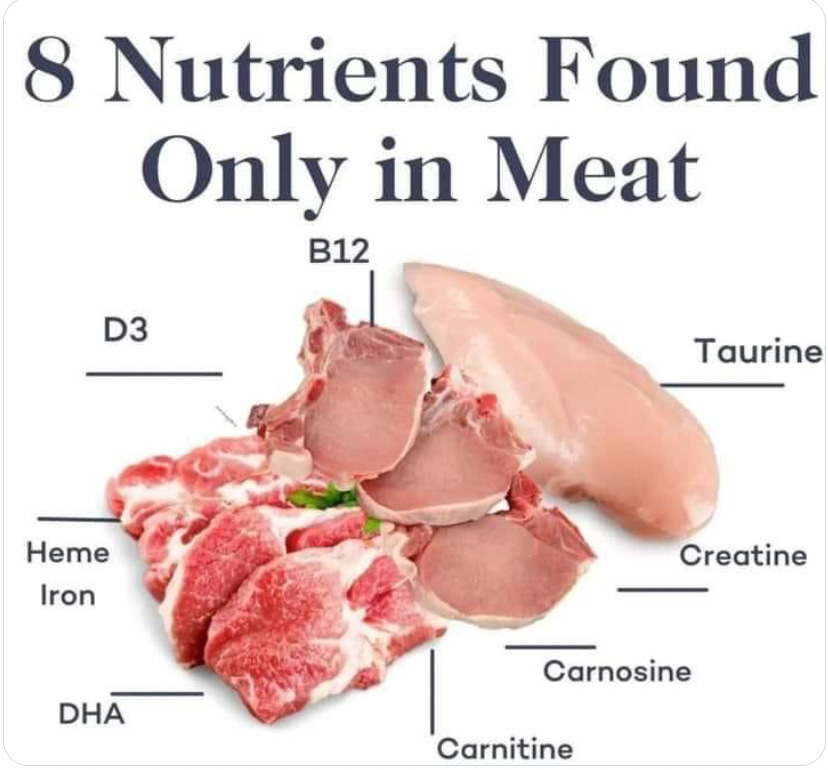

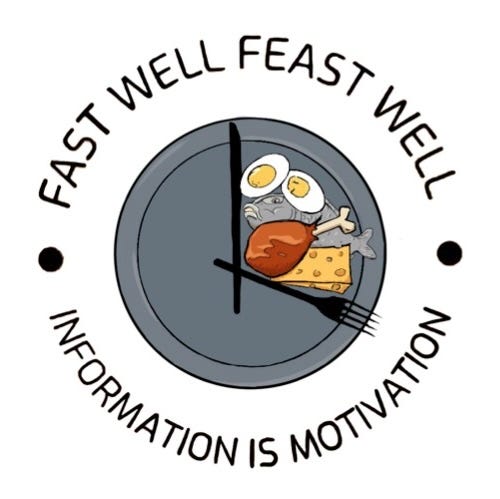
Are you planning on expounding more on the microbiome comment? Gut health seems to be a hot topic nowadays so I’m sure it’s susceptible to faulty science but there seems an evidence to support the idea of gut bacteria playing a key role in health.
I dabbled with the idea of being plant based after the biography of a vegan triathlete. I was so hungry all the time! I’m still ashamed that I was duped by that book. However, I’m thankful that I can move forward equipped with better information than I had before!
Great explanation and information on the various digestive system.